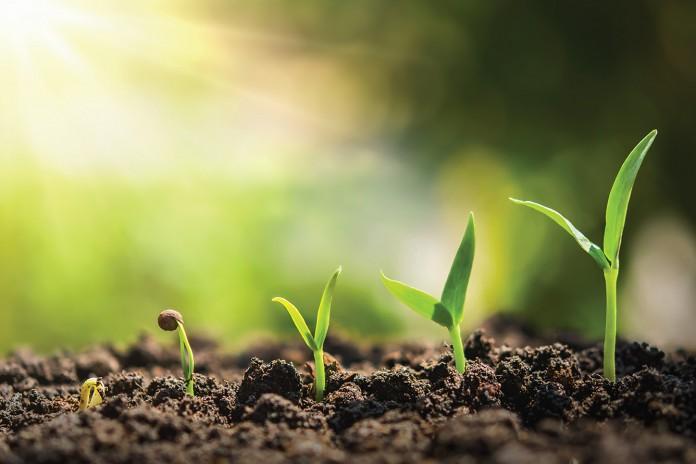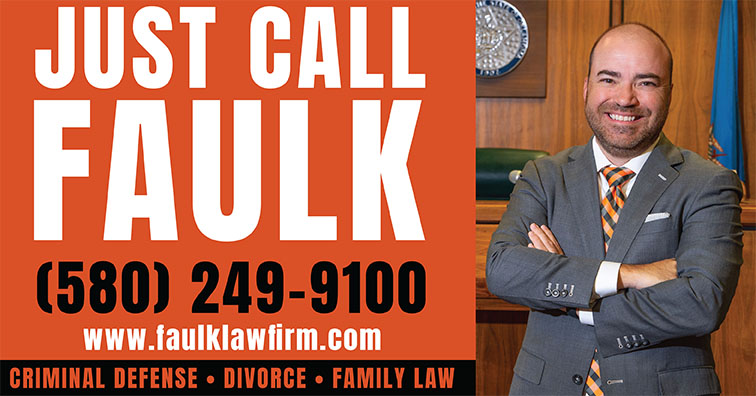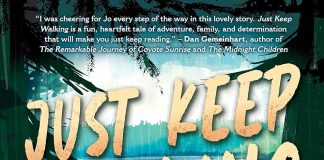By Cathy Thomas – Master Gardener Class of 2019
Spring has arrived! Signs are everywhere. Baby animals are frolicking. Baby birds are chirping. New plants are poking their sprouts up through the soil. Many stores have displays of seed packets and you have the itch to grow something. So plant a seed and watch it grow. It’s that simple. But what kind of seed? Where does the seed come from? How deep should it be planted? Should it be started inside or outside in the garden?
Seeds are nature’s way of reproducing plants. They can be purchased at a store in a seed packet. You can harvest your own. You can share with a friend. Or you can go to the Enid and Garfield County Public Library and “check out” the many different varieties of vegetable, herb, and flower seeds that are available in the Seed Library on the second floor of the Enid Public Library. To “check out” seed from the seed library, borrowers just need to fill out a slip for inventory purposes. You don’t even need a library card! But a library card helps to check out some gardening books for gardening guidance. At the end of the growing season, harvest some of your seeds and bring them back to share with others for next season. It’s that simple.
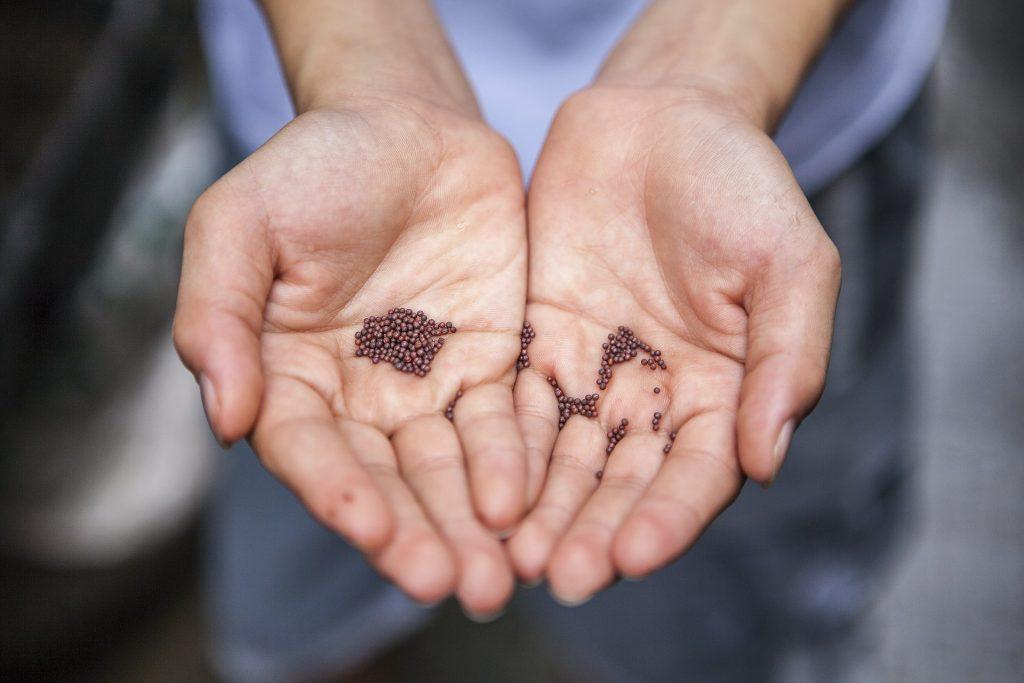
My first experience with saving seeds happened by accident. My daughter made a bean bag at Girl Scouts using dried pinto beans from a bag of beans from the grocery store. The bean bag ripped, so she just dumped them into our front flower garden. In early May these sprout things started to grow. By mid-June, bean pods were growing on bushy-looking plants. We harvested enough for a small pan of beans. They were delicious. I thought if beans from the grocery store would grow, what else could I grow from seeds from other places. Could I actually grow my own seeds? What a novel idea! I allowed the bean pods to dry out in the early fall. I picked them, shelled them, and stored them in a paper letter envelope. The next year I planted them and grew…beans!
About the same time, I had a delicious butternut squash from the grocery store. I thought, if it worked for beans, I wonder if it would work for squash? It did. Every year since then I have saved some seeds from the butternut squash I have harvested and planted them the next spring. At this point, the butternut family is in its 6th generation.
A couple of key ideas to keep in mind when harvesting your own seeds knowing what kinds of plants you have, how they produce seeds, how the plants are pollinated, and whether they are annual, biennial, or perennial plants. Vegetable plants produce a fruit that contains the seed. Beans have seed pods. Tomatoes have seeds inside the pulp. Cucumbers, summer squash, zucchini, eggplant all have seeds inside the flesh. Peppers, okra, pumpkins, gourds have seeds inside the hollow centers. All of these plants have flowers that are pollinated (made reproducible) in your garden by birds, bees, butterflies and other insects, and even the wind. This method of pollination in your garden is called Open Pollination. These flowers produce the fruit/vegetable that contains the seeds. Leafy greens such as lettuce, spinach, and kale produce tall stalks at the end of their growing season towards the end of June. Flowers that bloom on these stalks produce a seed pod at their base of the flower which can be harvested for seeds after they dry on the stalk. Many flowers such as coneflowers (brown-eyed Susans, echinacea, daisies) marigolds, zinnias, and sunflowers, will dry well on the stalk and the seeds can be collected from the central part of the flower.
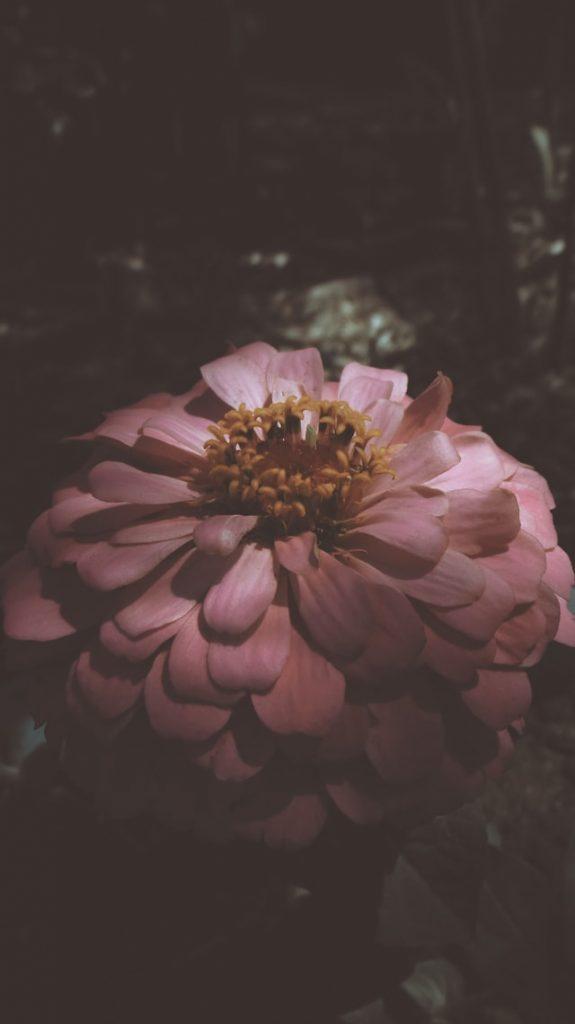
Most garden vegetables and seed flowers need to be replanted every year or annually. Thus they are called annuals. Biennial vegetables require two seasons to complete their life cycle or produce seeds and die. These include cabbages, onions, beets, celery, and carrots. Perennial plants live for a minimum of three years but can live for decades. They usually can produce seeds and not die. Plants in this group include many herbs such as oregano and rosemary, fruit trees like apples and pears, and berries, rhubarb, and asparagus. Most grasses, trees, shrubs, and bulbs also are considered perennials.
Save information on your seeds. Keep good records such as the common name of the plant, the Latin name if you know it, the date it was planted, the date it was harvested, any types of growing specifics such as how many days from planting until maturity (harvesting (vegetable) or flowering), planting depth, sunlight needs (full, partial, or shade) and any other important observations. Choose healthy plants for ideal seeds. Healthy plants are more likely to produce healthy, vigorous seeds. Save the seeds from disease-free plants that have ideal characteristics such as shape, color, flavor, and size that match the plant variety’s description.
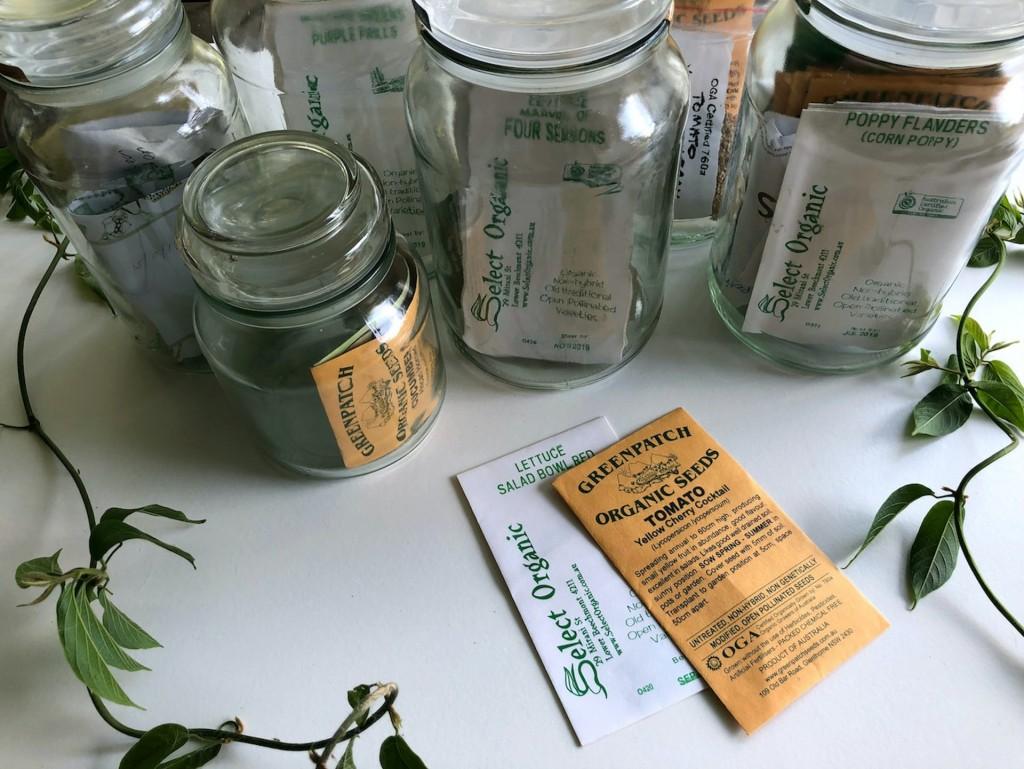
Store seeds that are fully mature, dry, and pest-free in a cool, dry, dark area that is protected from pests. Storing your harvested seeds in paper envelopes helps keep them drier than in a plastic ziplock bag. Also, cardboard shoe boxes or plastic totes with air circulation holes work well for storing seeds and keeping them organized. Check out the Seed Library for some more tips and information on saving seeds.
Sharing seeds with your friends and family is very rewarding and lots of fun. And if you see a plant that you don’t have in your garden in a neighbor’s garden, ask if you can have some seeds. Just like the plant, a new friendship may spring up from planting a seed.







